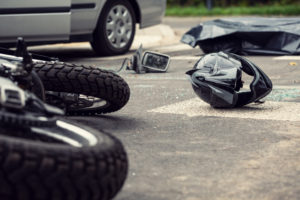On Monday, August 21, 2017, all of North America will be treated to at least a partial eclipse of the sun. However, the thin path of totality (showing the full eclipse) will pass through portions of 14 states. There is only one other coast-to-coast eclipse to compare it to, and that occurred nearly 100 years ago, on June 8, 1918.
Why is this such a big deal, and what will you see?
“It brings people to tears,” Rick Fienberg, a spokesperson for the American Astronomical Society (AAS), told Space.com of the experience. “It makes people’s jaw drop.”
This solar eclipse is when the moon passes between the sun and Earth and blocks all or part of the sun for up to about three hours, from beginning to end. To see a total eclipse, when the central disk of the sun is completely covered by the moon, you must be in the path of totality. Observers will see the pitch black silhouette of the moon where the sun used to be, and surrounding it will appear the faint tendril-like atmosphere of the sun, and a smattering of stars. Just before totality, you will see flashes of light along the circumference of the moon. These are known as Baily’s Beads. At peak totality, the corona (the sun’s outer atmosphere) will be transcendental. Astronomers say an eerie cold will engulf you as the sun’s rays are extinguished.
Depending on where observers are located, the sun may be completely obscured by the moon for up to 2 minutes and 40 seconds. Using the NASA interactive eclipse map, you can find out exactly if and when totality will occur and how long it will last in your area. Just click on a spot on the map, and an informational box will appear with specific times.
If you are fairly close to the middle of the path of totality, you should be able to see an orange glow on the horizon all around you, even as the sky is dark overhead. During a partial eclipse, the face of the moon will appear to take a bite out of the sun. You will see stars and planets more visible, especially Venus, Jupiter, and Mars.
It is important to know how to safely view the eclipse. Here are some tips for safe viewing from the American Astronomical Society:
The most important thing is to not look at the sun with your naked eye. Any glimpse of the sun’s brightness, even for a moment, is dangerous. “When you look directly at the sun, the intensity of the light and the focus of the light is so great on the retina that it can cook it,” said Dr. Christopher Quinn, president of the American Optometric Association. “If the exposure is great enough, that can and will lead to permanent reduction in vision and even blindness.” The only exception, when you can look at the sun with your naked eye, is if you are in the path of totality and when the sun is completely covered by the moon.
Sunglasses are not enough; they won’t block infrared radiation. To safely observe the eclipse, you will need eclipse glasses, which have a safe solar filter. Cover your eyes with your eclipse glasses before looking up at the bright sun. Turn away from the sun before removing the glasses.
If you look through and the sun is too bright, out of focus, or surrounded by a murky haze or if you can see things like ordinary household lights, the glasses aren’t safe. Additionally, never use eclipse glasses that are three years or older because they were made before the international safety standard was implemented.
What if you don’t have eclipse glasses? No worries. All you need is a piece of card stock (or cardboard) and a pin. Poke a hole in the center of your card stock to make your pinhole projector. Position your projector over a light piece of paper or light sidewalk until you see the small circular projection of the sun appear on the paper. You can also use a cereal box. Cut a piece of paper to fit the bottom of the box and tape it inside. Then seal the top of the box and cut rectangular squares out of each top corner then cover one of these rectangles with aluminum foil and put one hole in the center of the foil. When viewing the eclipse turn your back to it and have the aluminum foil face it so that the sunlight can get through the hole you poked. Look through the empty rectangle you made on the other side of the top to watch the light get eclipsed by the moon. This type of projector is good because there’s no outside light for your eyes to take in.
You will also need a solar filter if looking through a camera, telescope, or binoculars. Pointing an unprotected lens directly at the sun can not only damage your eyes, but the instrument as well. Place the filter on the end of the lens; do not wear eclipse glasses while looking through any of these. “The concentrated light from the optics will go right through the filters on the eclipse glasses and cause severe injury to the eye,” Fienberg said.
What about pets? There is no need to worry about shielding your pets from the eclipse. While animals may exhibit strange behavior during the eclipse (those that rely on light cues may start to act like it is twilight), they know not to look up.
What about traveling during the eclipse? The Federal Highway Administration (FHWA) is already calling it “one of the largest driver distractions in years.” The agency recommends that everyone avoid driving during the eclipse, especially those in the path of totality. If you must drive:
- Don’t stop along the interstate or park on the shoulder during the event.
- Don’t take photographs while driving!
- Don’t try to wear eclipse glasses while operating a vehicle.
- Turn your headlights on — do not rely on your automatic headlights.
- Watch out for pedestrians.
For more information, on “Eclipse: Who? What? Where? When? and How?”, click here.
Mark Bello has practiced law for 40 years. He is currently the CEO and General Counsel of Lawsuit Financial Corporation, a pro-justice lawsuit funding company, and the author of the two legal thriller novels, Betrayal of Faith and Betrayal of Justice (books available on major online book store sites).
Photo Credits: NASA
@thumbnail.jpg)
Experienced attorney, lawsuit funding expert, certified civil mediator, and award-winning author of the Zachary Blake Legal Thriller Series. The series features super-trial lawyer Zachary Blake handling "ripped from the headlines" legal and political issues of the day. The series currently consists of Betrayal of Faith, Betrayal of Justice, Betrayal in Blue, Betrayal in Black, and Betrayal High, with a sixth Zachary Blake novel due out later this year. To learn more about these topical social justice legal thrillers. please visit markmbello.com. Mark is a member of the State Bar of Michigan, a sustaining member of the Michigan Association for Justice, and a member of the American Association for Justice.










Comments for this article are closed.